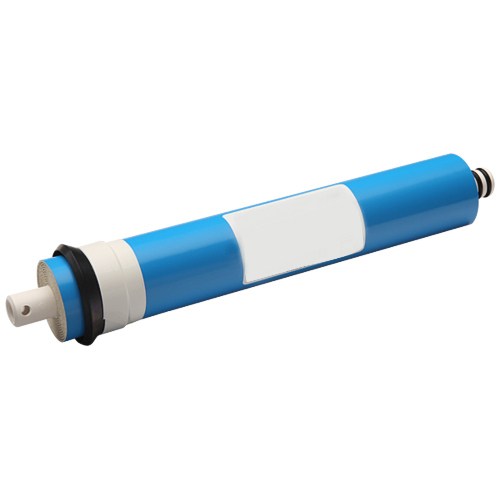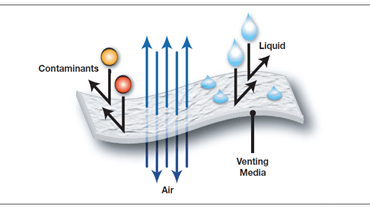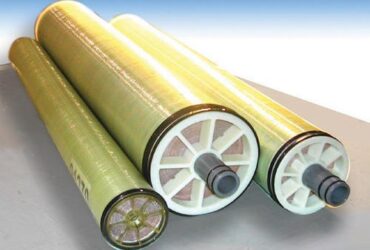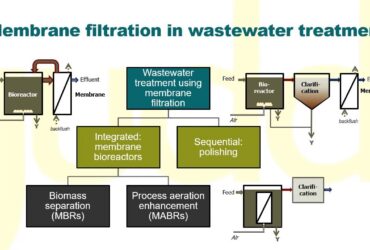What Exactly Is a Membrane Filter, and How Would It Perform?
Membrane filters may operate as a shield to exclude the water from pollutants or extract the
materials that contaminate the water. A filter membrane is used in reverse osmosis,
ultrafiltration, and nanofiltration techniques. There are three types of membranes: reverse
osmosis (RO), ultrafiltration (UF), and nanofiltration (NF). These all use a somewhat new
technique in the membrane filtering process.
What materials is membrane filters constructed of?
Membranes are produced from a variety of materials. Thin-film compound membranes are
frequently used in reverse osmosis. The reverse osmosis membrane was formerly constructed
of cellulose triacetate or CTA. CTA membranes are no more available for purchase. They
were the earliest RO membranes and had a limited pH threshold. They didn't produce much
water per square inch. The thin film allows a RO system to create more water in less area,
allowing more prominent membranes to be housed in more miniature housings. This
transformed the design of osmosis membranes. UF utilizes the same material but with a
different recipe.
Replace the recycled water membrane every two or three years, depending on the drinking
water quality. As the Filtration system rejects additional minerals, some of those minerals
begin to precipitate out of the way to solve and pollute the membrane's volume of water. If
you feed the RO system gentle water, the membrane might last five years if the filters are
replaced regularly. For a moment in time (POU) application, replace the ultrafiltration
membrane once every two years. As they filtrate, UF membranes accumulate pollutants.
How is a membrane filter cleaned?
A filter membrane in a home POU system does not need to be cleaned. To flush or cleanse
the membrane, use substances to loosen some of the scale or particles obstructing it.
Attempting to clean or purify the membrane is more expensive than replacing it once every
few years. To ensure that everything functions correctly, periodically cleanse the membrane
before usage.
How is a filter membrane cleansed?
A filter membrane process is a flow-through membranes technique, not a separation
membrane. Remove the air from the adsorbent at the beginning to flush it. When starting up a
reverse osmosis system, wash it to assist s actually since these filters are typically constructed
and then dried. When employing a POU system, fill two or three containers with water and
let these run into the drain.
Superior Taste
The fewer chemicals and particle matter in your water, the healthier it will taste. Meanwhile,
some users may require time to adjust to the flavor. Many become used to the flavor of some
minerals found in unfiltered water. You may not need a 7-stage RO filter based on your
preferences because you might wish to keep some aspects in the water.
Using water from the city or a just well enough to drink instead of drinking water will
provide you a lot of money. Consider purchasing reusable drinking bottles and bringing your
RO filtered water with you to activities, the office, or everywhere you go.
Water Purification System Membrane Nanotechnology
The standard municipal drinking water treatment facility mainly depends on chlorine
chemical precipitation. The chemical dose must be controlled regularly since it strongly.
As a result, maintaining treated water quality
is difficult without relevant information and monitoring procedures. Unlike chemical-based
treatments, membrane filtration systems generate microbial contamination in clean drinking
water with no additional chemicals, making it suitable for drinking and hygiene purposes.
The modular structure of membrane systems will enable different treatment capacities to be
tailored to the needs.
Membrane drinking water is a method of removing undesirable elements from water. A
membrane is a barrier that permits certain substances to flow through while preventing others
from doing so. Treatment systems purify rainwater, underground, and wastewater using
different membranes and methods to provide water for industry and consumption.
Water filtration is a huge multinational business expanding due to rising worries about water
contamination and a reduction in safe, clean, readily available current water sources.
Membrane filtration removes particles from water by using membranes. The method is
similar to traditional sand or media filters in that suspended particles are removed, but
dissolved solids are often not removed. Membrane filtering methods can be pressure or
vacuum operated. Membrane technology is widely used in wastewater treatment to remove
organisms and certain viruses.





